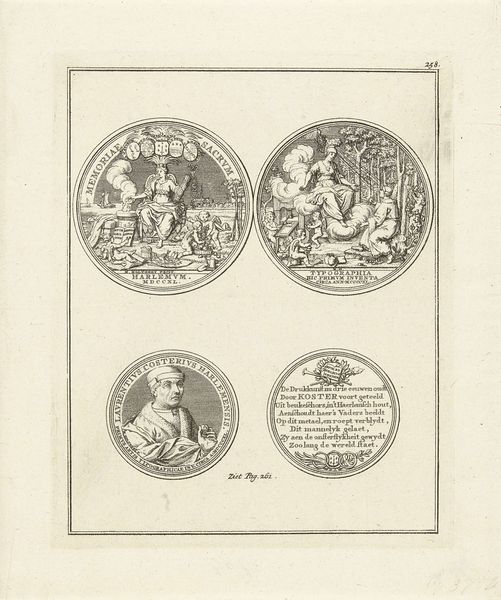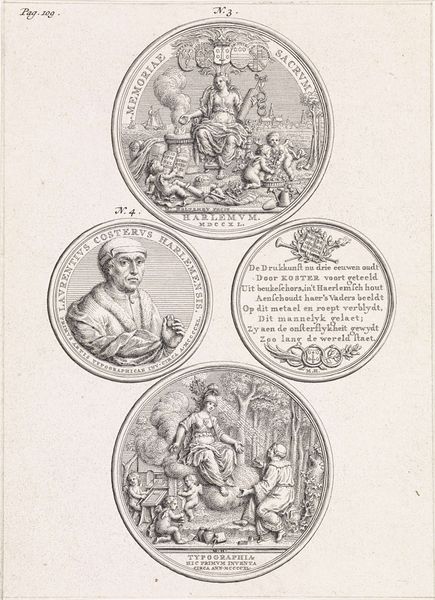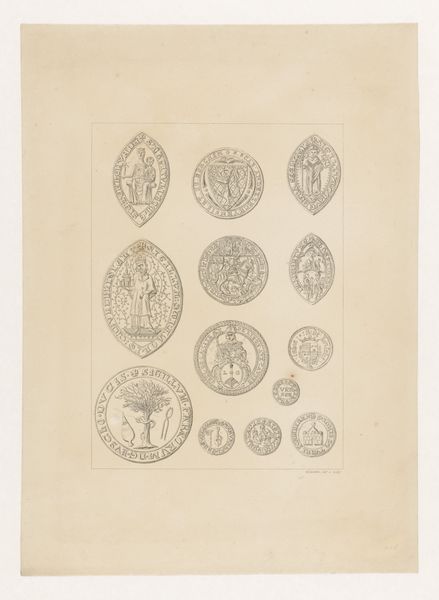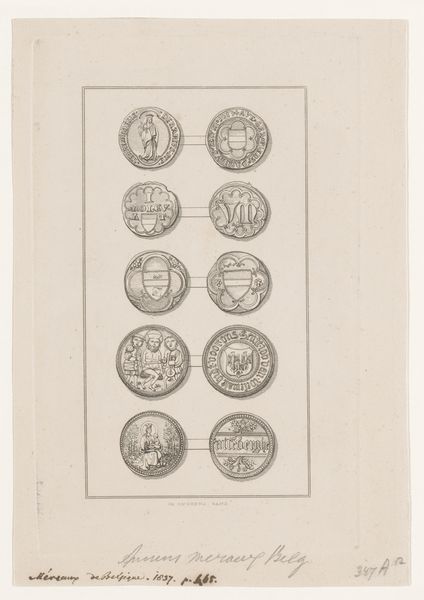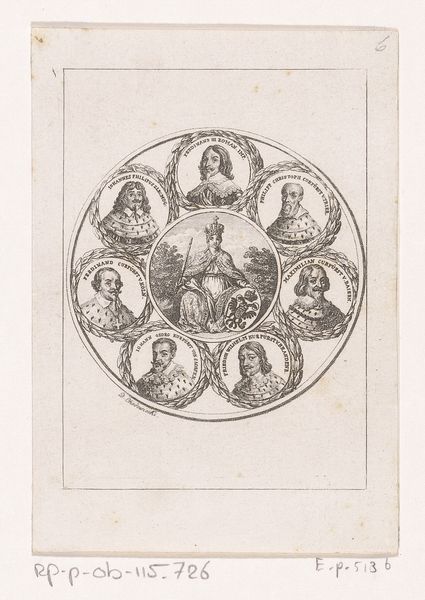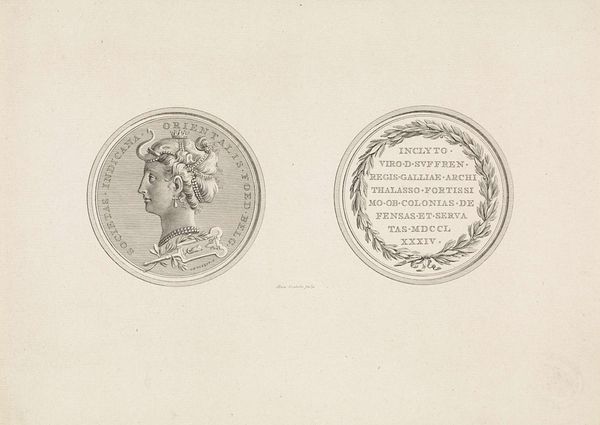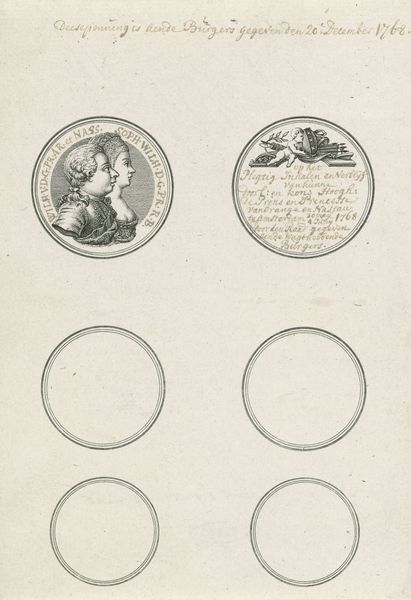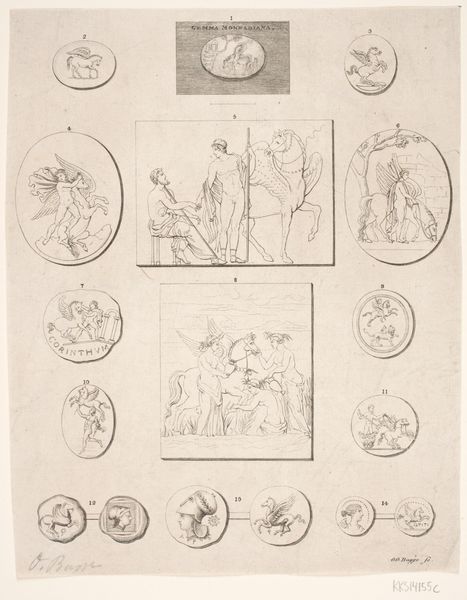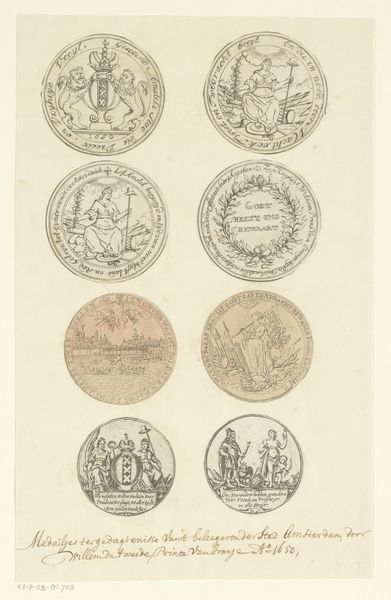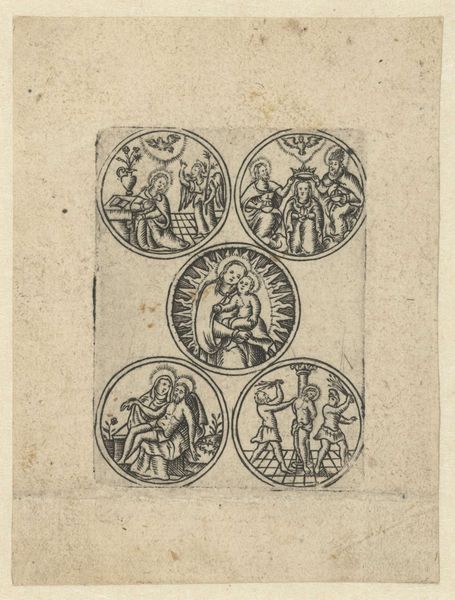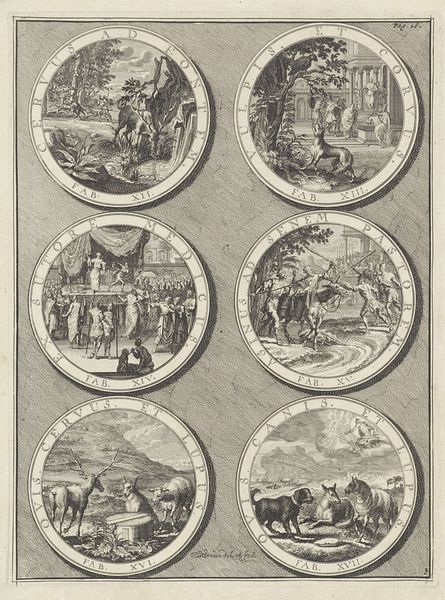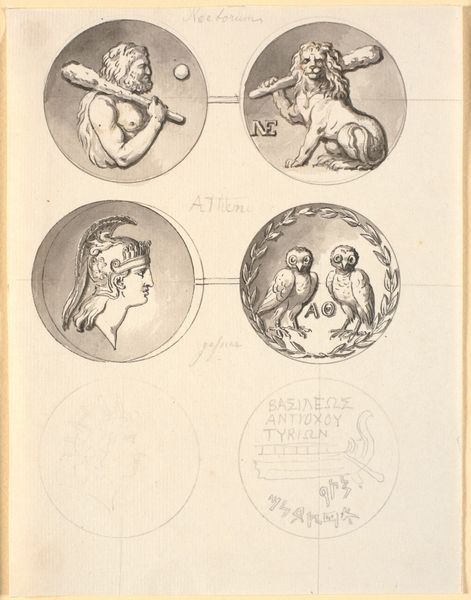
Onversneden blad met de voor- en achterzijde van zes penningen vervaardigd ter ere van Laurens Jansz. Coster 1740
0:00
0:00
janwandelaar
Rijksmuseum
graphic-art, print, engraving
#
portrait
#
graphic-art
#
baroque
# print
#
old engraving style
#
history-painting
#
engraving
Dimensions: height 165 mm, width 403 mm
Copyright: Rijks Museum: Open Domain
Curator: Jan Wandelaar created this detailed engraving in 1740. It's titled, "Onversneden blad met de voor- en achterzijde van zes penningen vervaardigd ter ere van Laurens Jansz. Coster," currently held at the Rijksmuseum. Editor: My first thought is, what an intricate arrangement. It seems almost scientific in its presentation—a flat, meticulously rendered array of medals. Curator: Indeed. Wandelaar's organizational skills present us with an easily analyzable format; the piece foregrounds crispness and order. Tell me, does the uniformity extend to the iconography within the depicted medals themselves? Editor: I think there is a dialogue here. There is evidence, most powerfully, that the portraits focus on honoring Laurens Jansz. Coster; he is repeatedly memorialized. The fourth medallion features the artist facing left, the next shows an industrious interpretation of the printing press; certainly there's symbolic intent behind such compositions, isn't there? Curator: Quite. The placement suggests a direct link between Coster’s visage and the machine, underscoring the essence of productivity. And that printing press medallion cleverly references the supposed year that Coster pioneered printing technology. It reveals an engagement with the socio-cultural moment in which the figure came into prominence. Editor: The entire sheet, then, can be understood as an artifact not just about Coster but also as a testament to how we choose to remember figures through state-sponsored images like medals? The composition presents these objects methodically and publicly, making it both a commemoration of one man and an inquiry into what makes this same man’s commemoration worth creating in the first place. Curator: Yes, quite eloquently stated! The precise detail serves to highlight these visual-historical layers. Editor: These individual components are more than just aesthetic forms in the end; they really show how this object can serve a crucial, active function, particularly during the era in which it was made and after! Curator: This piece exemplifies the intersection of history and aesthetics and the way the Baroque style lent itself to meticulous documentation of significant cultural moments, immortalizing a pivotal time for not just Coster, but also, art and print. Editor: Wandelaar, through close rendering, presents us with an object, that preserves memory while prompting reflection.
Comments
No comments
Be the first to comment and join the conversation on the ultimate creative platform.
